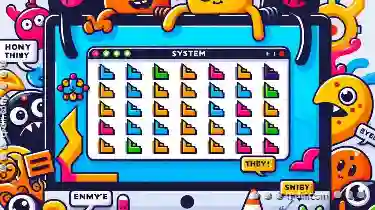One area that often sees overzealous design choices is the preview pane of applications-whether they be software tools, web browsers, or mobile apps. This ...
 blog post will explore the potential downsides of overly large preview panes and advocate for a more thoughtful approach to layout and size in user interface design. In the digital landscape, where user interfaces are increasingly becoming complex and feature-rich, it's crucial to balance functionality with aesthetics.
blog post will explore the potential downsides of overly large preview panes and advocate for a more thoughtful approach to layout and size in user interface design. In the digital landscape, where user interfaces are increasingly becoming complex and feature-rich, it's crucial to balance functionality with aesthetics.1. Sub-points:
2. Conclusion:
1.) Sub-points:
1. User Interface (UI) Complexity
- Clutter and Confusion: When preview panes are too large, they can overwhelm the main content, leading to visual clutter that confuses users. This complexity can be detrimental for tasks requiring quick information access or decision making.
2. Performance Concerns
- Loading Delays: Larger preview panes take longer to load, which can lead to noticeable delays in accessing other parts of the application. For impatient users, this can translate into a poor user experience and increased frustration.
3. Accessibility Issues
- Screen Space Allocation: Overly large panes may consume too much screen space on smaller devices, making it difficult for users to view multiple windows or panels simultaneously, which is crucial in multitasking scenarios.
4. User Expectations and Usability
- Initial Perception: Users often form opinions about software based on their initial interactions with it. An overly large preview pane might be perceived as an attempt to cram too much information into a single view, potentially detracting from the overall professionalism or usability of the application.
5. Aesthetic and Design Principles
- Design Balance: According to design principles, balance is crucial for creating visually pleasing interfaces. An overly large preview pane can disrupt this balance, making it difficult to achieve a harmonious interface that respects user attention space.
6. Impact on User Workflow
- Interruptions in Task Flow: Large preview panes can interrupt the flow of tasks by forcing users to shift focus between main content and extensive previews. This constant shifting is not only disruptive but also time-consuming, potentially reducing productivity.
7. Testing and Iteration
- Testing with Real Users: It's essential to test interface elements like preview panes with actual users to understand how they interact with these interfaces in real-world scenarios. User feedback can provide valuable insights into whether larger panes are truly beneficial or just adding unnecessary complexity.
8. Technology and Software Limitations
- Resource Intensive: Large preview panes require more computational power and memory, which might be a limitation for older devices or applications optimized for lower resource usage. This can lead to performance bottlenecks that affect overall user experience.
2.) Conclusion:
While it's tempting to include every possible feature in an interface, larger preview panes are not always the answer. They can complicate UI design, negatively impact usability and accessibility, and lead to aesthetic discomfort. Designers should be cautious about expanding the size of preview panes unnecessarily and instead focus on creating layouts that offer clear, concise information without overwhelming users.
By balancing content with appropriate visual space allocation, designers can craft interfaces that are both functional and aesthetically pleasing. Remember, less is often more in UI design-a principle that applies equally to the size of your preview panes.

The Autor: / 0 2025-04-17
Read also!
Page-

File Paths in Backup and Restore Processes
They are essentially strings that represent the location of files or directories within a computer's filesystem hierarchy. Proper understanding and ...read more

System Folders: Why You Shouldn’t Modify Them
When it comes to managing files on your computer, understanding where certain important system folders reside can be crucial. These system folders, ...read more

Why Isn’t the Cut Option Available? Troubleshooting
When working with files and folders in various operating systems, you might have encountered situations where the cut option is not available. This ...read more